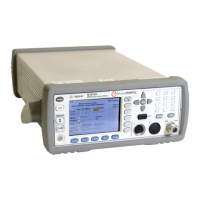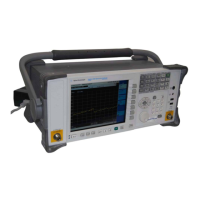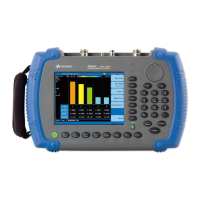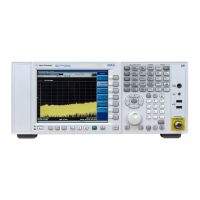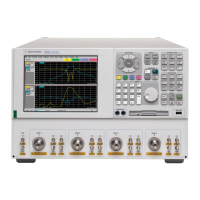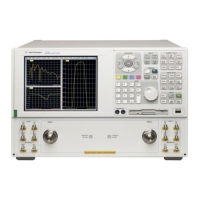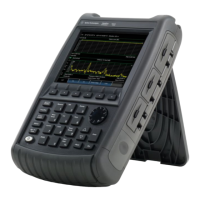3 Using E9300 E-Series Power Sensors
114 N1913/1914A EPM Series Power Meters User’s Guide
5 Press to display the Meas Avg Count pop- up.
6 Use the numeric keys to enter the required value.
7 Press to complete the entry.
Procedure
Switch off step detection as follows:
1 Press
. On dual channel meters, select the required channel.
2 Use the and keys to select the Step Detect setting field.
3 Press to check the step detection to Off.
4 Press key to close the Channel Setup screen.
Achieving Stable Results with GSM Signals
Signals with a pulse repetition frequency (PRF) close to a multiple or a
submultiple of the 440 Hz chopper- amplifier signal generate a beat note at
a frequency between the PRF and 4F400Hz0 Hz. Control over the filter
settings is again required to obtain stable results.
Tip The PRF of a GSM signal is approximately 217 Hz and thus requires
more averaging than most other TDMA signals. To achieve a stable
measurement use the filter setting procedures to set the .
Experimentally, a setting of 148 gives optimum results
although settings in the order of 31 or 32 give acceptable results if a
faster measurement is required.
Ensure that the filter is not reset when a step increase or decrease in power is detected by
switching the step detection off.

